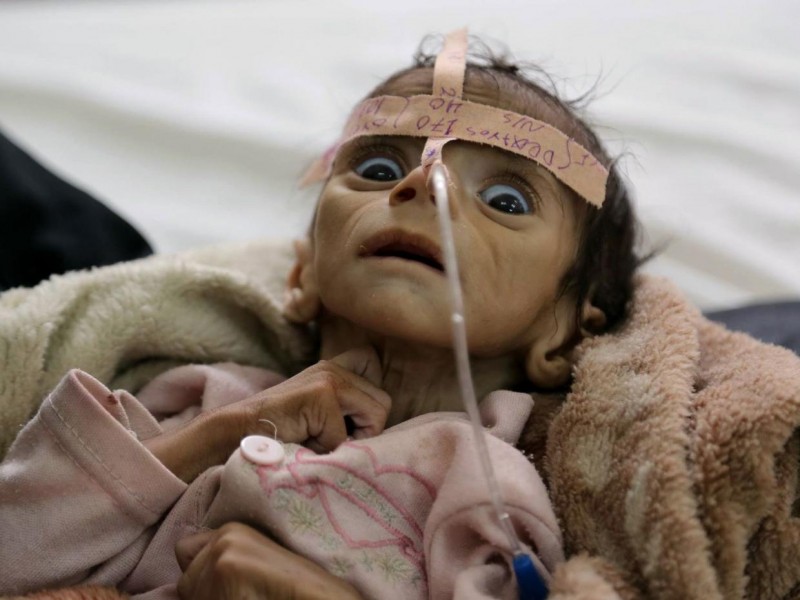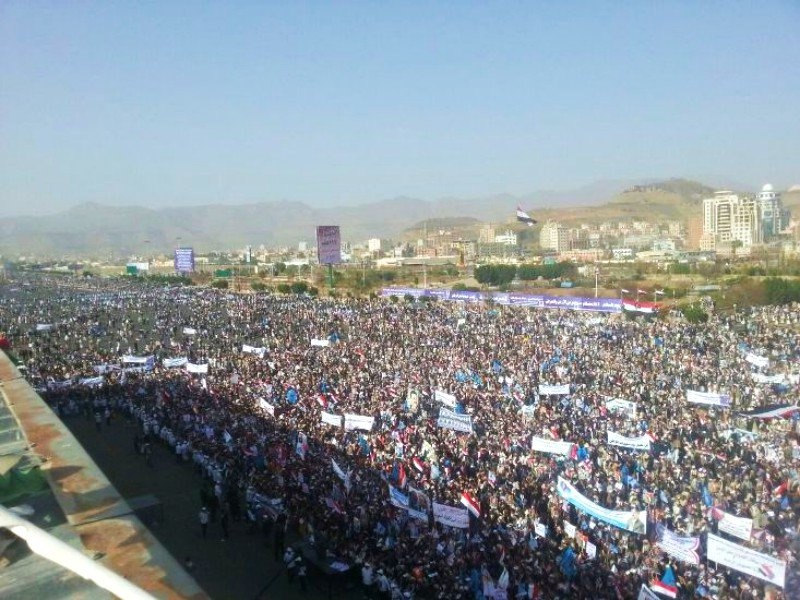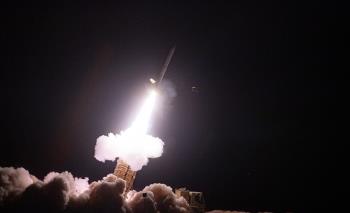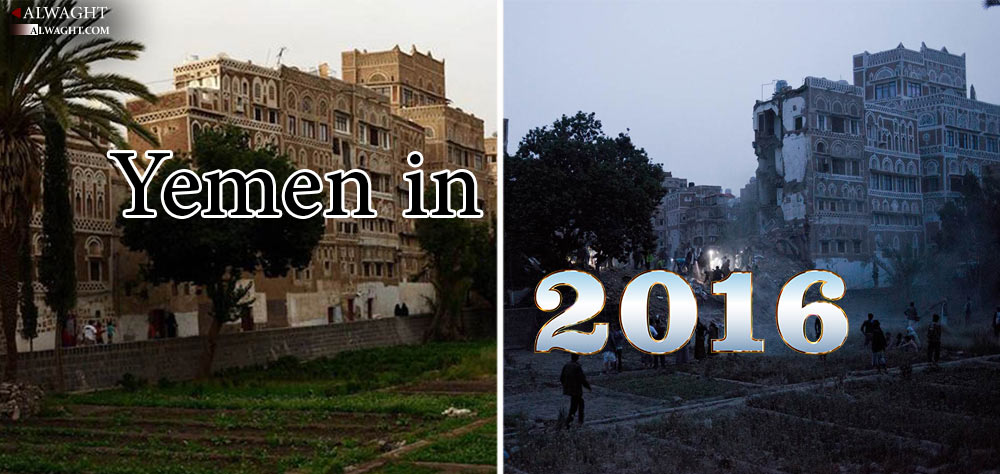Alwaght- Ceasefires were declared and broken, negotiations were kicked off and halted, civilians were targeted and amore that 11,500 were killed, cross-border attacks continued, and Saudi-led coalition air strikes were carried out indiscriminately. Deaths, injuries, diseases, destruction, and famine are some of the repercussions of the war on Yemen. In 2016, political and military developments failed to bring about an end to the Saudi-led aggression. Here’s a brief look at Yemen’s 2016 year in retrospect.
December
On 6 December, Pro-Saudi side rejected a UN plan to end the war, saying the roadmap would create a "dangerous international precedent" by legitimizing the rebellion against the country's internationally recognized government.
A Dec. 6 letter to the Security Council from Yemen's UN mission, seen by Reuters, called UN envoy Ismail Ould Cheikh's plan a "free incentive to the Houthi-Saleh rebels, legitimizing their rebellion, their agenda."
UNICEF announced that more than 400,000 children were at risk of starvation in Yemen, with nearly 2.2 million in need of urgent care.

The recent figures indicate that hunger among children has reached an "all-time high", with at least 462,000 suffering from severe acute malnutrition—a number largely increasing due to the Saudi-led aggression against the impoverished nation.
November
In November, a new government was formed by Ansarullah and its political allies.
“The Council noted that this comes amid the intransigence of the aggression and its [Yemeni] mercenaries to move within the framework of a national solution ... to spare the country further bloodshed and destruction,” Saba news agency reported.
A cessation of hostilities, brokered by the US and Oman, was enforced on November 19 but soon collapsed after members of Hadi’s ousted government condemned their exclusion from talks and called for continued operational support from the Saudi-led coalition. The Saudi-led coalition and the Ansarullah-Saleh alliance agreed again on a roadmap for peace talks, but significant roadblocks—including the selection of and transition of power to a consensus leader, the disarmament of forces, and the control of terrain— remained.
Ansarullah fighters, meanwhile, continued operations in Taiz governorate where they sought to secure Yemen’s third largest city. Cross-border shelling also continued as coalition forces carried out multiple airstrikes.
The Southern Movement persisted calls for southern independence as near daily demonstrations were held over government corruption, lack of services, and unpaid salaries.
The so-called Ansar al-Sharia, a terrorist umbrella organization, claimed attacks against Ansarullah fighters and the Yemeni army in al-Bayda, Ibb, and Taiz governorates throughout November.
October
A US-backed Saudi-led strike on a crowded funeral ceremony in Sana’a, on 8 October, killed as many as 140 people and wounded more than 500, including children. Human Rights Watch said the massacre amounts to an apparent war crime.

On 4 October, the Ansarullah movement said Hadi must be removed from power while the UN must present a written and comprehensive peace plan. They also demanded an end to the “aggression,” and the lifting of the siege as a condition to return to talks.
September
Ousted president Hadi appointed a new head for Yemen’s central bank and relocated the bank from the capital Sana’a to Aden. On 18 September, he appointed his finance minister, Mansur Saleh Mohamed al Quaiti, as Chairman of Yemen’s Central Bank.
Also in September, the humanitarian situation continued to deteriorate. The World Health Organization estimated that 6,780 people had been killed since March 2015. The number was believed to be much higher as air strikes targeted hospitals and residential areas. Nine of Yemen’s 22 governorates remain at emergency levels for food security.
August
The Russian Charge d’Affaires for Yemen, Oleg Dremov, attended the ceremony formalizing the Supreme Political Committee (SPC) on August 15, calling the body a “realistic authority” that “widens the base of popular legitimacy.”
In August, the UN announced its removal of the Saudi-led coalition from a child rights blacklist which was released a week earlier. The move triggered angry reactions from human rights groups which accused Secretary-General Ban Ki Moon of yielding to pressure from Riyadh’s allies. The organization had put Saudi Arabia on the blacklist over its systematic killing of children in its aggression on Yemen.

Resistance fighters fired a locally made Zelzal-3 rocket at areas in Najran city, on August 23, showing their ability to strike Saudi positions.
Meanwhile, forces loyal to Hadi failed to advance near Taiz as Ansarullah fighters and members of the army foiled their attacks. Their failure echoed in Dhaleh, al-Bayda, and Ma’rib governorates.
July
Attacks against Saudi forces increased in July. Riyadh then warned that the violation of their border is a “red line.” But the threatening rhetoric did not stop Yemeni resistance fighters from striking a Saudi National Guard base in Najran. On 27 July, cross-border fighting erupted, leaving at least 12 Saudi soldiers dead.
The al Houthi political party, Ansarullah, and the General People’s Congress party, led by former President Ali Abdullah Saleh, signed a power-sharing agreement on July 28. The agreement creates a supreme political council with ten representatives from each party.
June
ISIS Wilayat Hadramawt claimed responsibility for four coordinated blasts that targeted Yemeni security forces in the port city on 27 June. As many as 42 people were killed in the explosions which were set off when they were breaking their Ramadan fast.
May
In May, Saleh al Samad, the president of Ansarullah’s political council members met with a delegation from the Southern Movement faction that had supported the National Dialogue initiative on April 25 in Sana’a.
Thousands of secessionists demonstrated in Parades Square in Khormaksar district in Aden the eve before the scheduled April 18 talks in Kuwait.
March
On 26 March, thousands of pro-resistance supporters took part in mass rallies in Sana’a. Ansarullah leader Abdul Malik al Houthi called for Yemenis to be steadfast in the face of the Saudi “aggression,” and called for an end to the war in the interest of the Yemeni people. Saleh supporters also participated in the rallies.

Earlier that month, Iran’s deputy chief of staff of the armed forces, Brigadier General Masoud Jazayeri, suggested that Iran could replicate its support for Damascus in Syria in its support of the Ansarullah movement in Yemen.
In March, the UN World Food Programme (WFP) said nearly half of Yemen's 22 provinces were on the verge of famine as result of the war there and more than 13 million people in need food aid. Aid groups have blamed curbs imposed by the Saudi-led coalition.
February
Coalition troops clashed with Ansarullah forces along the Saudi Arabian-Yemeni border while airstrikes were carried out vigorously against dozens of resistance positions as well as residential areas.
Jan 27
The UN attributed 60 percent (2,682) of the civilian casualties to air-launched explosive weapons. Coalition airstrikes hit dozens of targets in Sana’a and Sa’ada, as well as Ma’rib, killing a Doctors Without Borders ambulance driver in Sa’ada in the process.

Major victories were scored against the Saudi-led coalition in Yemen in 2016. On the other hand, the brutality of Riyadh and its allies did not subside, leaving Yemenis to suffer and strive. However, the cruelty of the war has not broken the Yemenis’ resilience as they look keen on surviving yet another year of their country’s modern history.



























